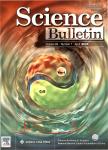Spring surface cooling trend along the East Asian coast after the late 1990s
Spring surface cooling trend along the East Asian coast after the late 1990s作者机构:Nansen-Zhu International Research CenterInstitute of Atmospheric Physics Chinese Academy of Sciences Climate Change Research CenterChinese Academy of Sciences University of Chinese Academy of Sciences
出 版 物:《Chinese Science Bulletin》 (Chinese Science Bulletin)
年 卷 期:2013年第58卷第27期
页 面:3847-3851页
核心收录:
学科分类:07[理学] 070601[理学-气象学] 0706[理学-大气科学]
基 金:supported by the National Natural Science Foundation of China(41130103 and 41210007) the CAS-CSIRO Cooperative Research Program(GJHZ1223)
主 题:表面冷却 东亚 降温 弹簧 海岸 年代 辐射冷却 海面温度
摘 要:This paper presents the surface cooling trend observed in spring along East Asia coast after the late 1990s,in contrast to the global warming *** surface cooling trend is comprehensible as it agrees well with the cooling of sea surface temperature(SST)in the northwestern Pacific and the weakening of 300 hPa East Asian jet(EAJ)during ***,this cooling phenomenon has been shown to be related to the rapid decline of Arctic sea ice cover(SIC)in previous *** Arctic SIC signals in previous autumns can continue in spring and act as enhanced moisture sources that support the increased snow cover in Siberia during *** increased Siberian snow cover possibly favors the southward invasion of cold air masses via strong radiative cooling and large-scale descending motion,which may contribute indirectly to the reduction of temperature in East *** addition,three climate models that can reproduce well the East Asian spring surface cooling observed in the past predicted uncertainty in the spring temperature projection in the next decade.



